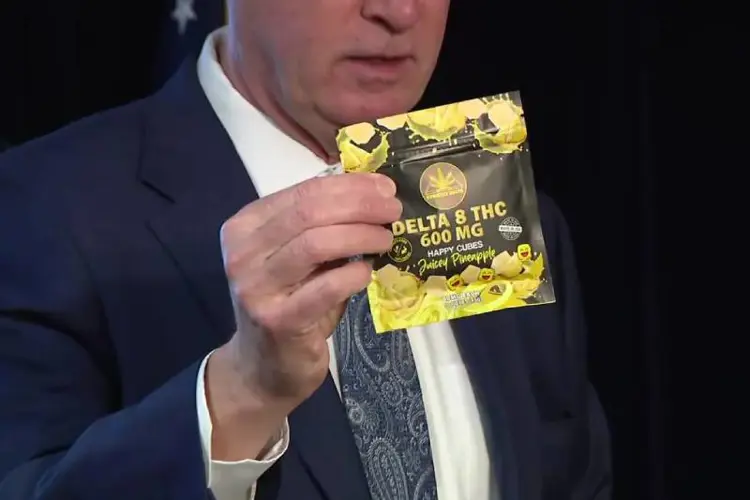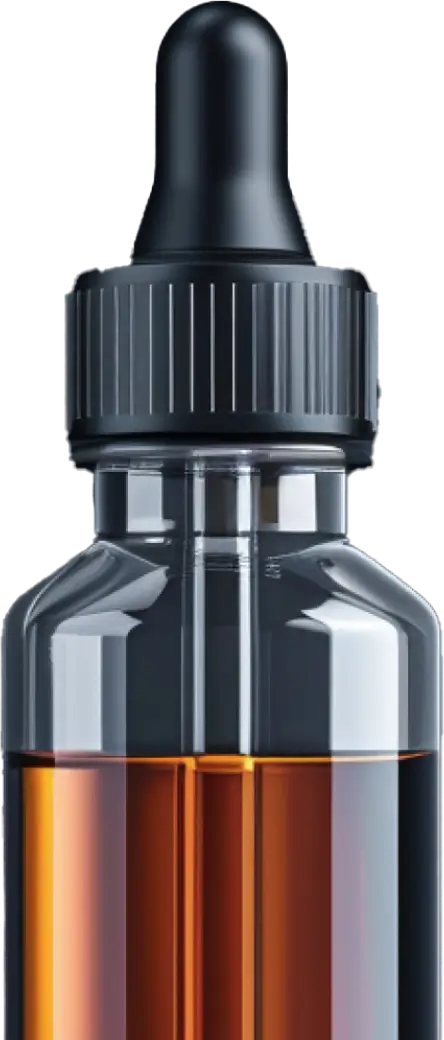Health officials in Wisconsin are grappling with an outbreak of severe lung ailments that may be related to vaping. Or they may not be related to vaping. Unfortunately, in their desire to avoid additional cases—and their zeal to prove their anti-vaping bonafides—the Wisconsin authorities have created a panic that will be counterproductive to public health.
Here’s the story so far:
On July 25, the Wisconsin Department of Health Services (DHS) issued a memo to healthcare providers and local and tribal health agencies warning of a lung disease cluster in Milwaukee, Waukesha, and Winnebago counties. It described eight cases of unexplained pulmonary disease among adolescents that were being investigated. The memo was straightforward and sensible, explaining what the DHS knew and what it didn’t know.
“All patients reported vaping in the weeks and months prior to hospital admission,” said the memo, from Dr. Jonathan Meiman, an epidemiologist. “The names and types of products used remain unknown, and patient interviews are ongoing. Clinicians are encouraged to remain alert for potential cases among persons presenting with progressive respiratory symptoms who report a history of inhalation drug use, particularly vaping.”
“Inhalation drug use” is not typically a phrase used to describe regular vaping of nicotine (or zero-nicotine) e-liquid. That seems to indicate that the DHS officials already suspected that the kids were using something other than standard vaping products.
That same day, Fox 6 News in Burlington, Wisconsin reported that a man in his mid-twenties had been hospitalized some days earlier for what was first thought to be pneumonia, but rapidly progressed, damaging both his lungs and heart. He had been placed in a medically induced coma and his prognosis was uncertain.
Burlington is about 35 miles southwest of Milwaukee.
The man’s brother said he had vaped what he called THC cartridges, sold on the street. The package he showed was labeled “Dank - Rose Gold,” and the product appears like a typical THC oil cartridge. There has long been a huge problem with counterfeit cartridges, filled with unknown substances and sold as branded cannabis products. The Dank Vapes “brand” is one of the most commonly seen in street sales.
But legitimate THC products like oil carts are not sold on the street or in c-stores—especially in non-legal states like Wisconsin. The Dank Vapes products are sold empty. If they are filled with liquid, there is no telling where it came from. As Zach Harris wrote in cannabis publication Merry Jane, the carts “could have contained any number of substances, including pesticide-tainted THC oil, synthetic cannabinoids, or something entirely different.”
Everyone loves a vaping panic
By the time the press got hold of the DHS announcement, the anti-vaping train was already steaming down the track. Only one of the original eight teens was still in the hospital when the warning went out, but the Wisconsin “disease detectives” still hadn’t isolated the exact source of their lung injuries. However, most of the “experts” quoted in the barrage of news stories that followed were more than happy to guess.
The Wisconsin American Lung Association issued a statement that said, “e-cigarette use is NOT safe, especially by youth whose lungs are still developing. E-cigarettes contain chemicals, heavy metals and fine particulates. The candy and fruit-flavorings that so many youth find appealing also contain chemicals known to cause irreparable lung damage.”
Fox News quoted officials from Children’s Hospital of Wisconsin (where the eight teens were treated) who warned that vaping could cause COPD. The Fox reporter then veered off to discuss vaping battery accidents. The CNN story published July 26 was entirely about nicotine and nicotine vaping. There was no suggestion that these events could have been caused by anything else. “The vapor cloud results from burning e-liquids,” wrote CNN’s Susan Scutti. CBS News discussed JUUL Labs’ position on teenage vaping.
Reporters from one local news outlet took their jobs more seriously than any of the national media. The Milwaukee Journal-Sentinel reported that some of the teens “reported that they had been buying vaping products—nicotine and THC—on the black market,” and went on to tie the teen “vaping” incidents to the man in Burlington who had vaped the unknown street drug. That is the only reporting of that fact to be found.
Of course, a pediatrician at the hospital that treated the teens dismissed this angle, saying “doctors are concerned about teens vaping anything.” But they weren’t vaping anything. They were vaping something—something dangerous and unpredictable, something with the potential to damage almost any organ in the body. And just about every part of the story we know points to the unknown substance being synthetic cannabinoids.
What are synthetic cannabinoids?
Originally, synthetic cannabinoids were created in labs for use by researchers studying the effects of marijuana and the human endocannabinoid system. Because these drugs bind to the same cannabinoid receptors as the THC found in cannabis (marijuana), they worked as substitutes for THC in lab experiments. However, they can be as much as 100 times more powerful than THC itself when consumed by people.
In the mid-2000’s these drugs showed up as “legal highs,” sold in convenience stores and head shops under the common brand names Spice or K2 (and later many, many other names). Usually the drugs were mixed with solvents and sprayed on dried plant material, then sealed in foil packages. They were meant to be smoked, although the packages often called the contents “potpourri,” or included statements like, “Not intended for human use.”
In the last few years, they’ve also been mixed with PG and VG and sold as e-liquid.
The business has shifted away from legitimate retailers, and the drugs are now often sold online or by street drug dealers. There have even been instances of spice (the name is often used generically now to describe these drugs) being labeled as CBD. There is no consistency to the products. Separate packages with the same branding may contain different levels of potency, or even completely different drugs. There are hundreds of synthetic cannabinoids, and the manufacturers change the formulas frequently to avoid law enforcement.
If marijuana were legalized for recreational use, there would probably be very little demand for spice. Many people try these drugs expecting them to provide a high similar to THC, the active compound in the cannabis plant. But the effect is nothing like smoking or vaping cannabis. According to the Drug Policy Alliance, the effects can include:
- Feeling stimulated and energetic
- Increased appetite
- Producing a dream-like state
- Nausea and vomiting
- Seizures
- Aggression and agitation
- Respiratory failure
- Loss of consciousness
Thousands of people who use these drugs wind up in hospitals every year, and the consequences can be very serious. Last year, over 100 people in New Haven, Connecticut were hospitalized with overdoses in a single week, according to CNN. Some had high heart rates and difficulty breathing. Many were found unconscious in a city park.
Earlier in 2018, the U.S. Army issued a warning about "vaping" and "CBD oils," after more than 60 personnel on a North Carolina army base were treated for a variety of symptoms, including seizures. The products in question were found to contain synthetic cannabinoids.
The drugs are usually produced in unlicensed Asian labs that seem to operate without ethical boundaries. It’s hard to guess what may be in them, and in fact just about anything can be. Last year, hundreds of people in several states were hospitalized with severe bleeding, and it was discovered that the synthetic cannabinoids they consumed contained a powerful anticoagulant (blood thinner) designed for rat poison. Several people died after bleeding uncontrollably.
One-time use of synthetic cannabinoids can cause “a range of mild to severe neuropsychiatric, cardiovascular, renal, and other effects,” according to the CDC, and researchers from Manchester (U.K.) Metropolitan University found that repeated use caused some people to experience extended psychotic episodes. Furthermore, according to the National Institute on Drug Abuse, synthetic cannabinoids can be addictive.
There isn’t much scientific literature specifically describing lung damage caused by synthetic cannabinoids. However, reports from emergency physicians have included breathing problems as a complaint, and respiratory failure is noted as an effect by several authorities. A 2013 case study from doctors at the UCSF-Fresno (California) Medical Center described in detail the nearly fatal lung complications experienced by one young man who regularly smoked spice.
Because spice and its relatives can’t be detected on standard drug tests, they’re popular among people who are regularly drug tested—military personnel, and people on parole or in drug treatment, for example. Spice isn’t unique to the United States. It’s sold around the world, and health authorities in many countries have dealt with the same problems.
Synthetic cannabinoids are also popular with teenagers, who may have no knowledge of the differences between spice and cannabis, and possibly no previous experience with actual marijuana. Spice is also sold by unscrupulous drug dealers who claim it’s cannabis.
The bottom line is, convenience stores, truck stops and websites don’t sell legitimate cannabis products. And anyone who offers you a colorful package (or bottle) with a marijuana leaf on it is scamming you. Those who deliberately experiment with spice would be well advised to put 911 on speed dial.
Wisconsin: just say no to vaping
On Aug. 2, the Wisconsin DHS issued a second warning, identifying additional cases of lung damage, and added Door, Racine, Walworth, and Dodge counties to the list of locations. The agency also announced that it was investigating seven other hospitalizations that appeared to follow the same profile.
“We are currently interviewing patients, all of whom reported recent vaping,” said DHS Secretary-designee Andrea Palm. “Our disease investigators continue to gather information about the names and types of vape products that were used in hopes of determining a common link.
“We strongly urge people to avoid vaping products and e-cigarettes,” she added.
That same day, the Illinois Department of Health issued a warning too, after three similar cases were discovered in Illinois. The areas in Wisconsin where cases have been reported are all very close to the Illinois border.
All of these cases, despite the just-say-no warnings from health officials, remain under investigation. The state health departments have no definite evidence that they were caused by vaping anything, and certainly none that they were caused by ordinary e-liquid-based vaping products.
Here’s what we do know:
- The first case that was reported—the 26-year-old man from Burlington, Wisconsin—involved vape carts that supposedly contained THC, but were almost certainly counterfeits that contained spice or some other street drug, or dangerously adulterated THC oil
- Some of the kids also reported vaping THC (which probably wasn’t THC)
- Regular nicotine vaping products have been available in the U.S. since 2007, and there has never been a cluster of hospitalizations for lung injuries caused by vaping
- Synthetic cannabinoids have caused many outbreaks that follow patterns similar to this one, and they are sold under a myriad of brand names (or with no branding) that could lead investigators to miss the common thread
- The Wisconsin health authorities and the news media seem determined to tie these incidents to the teenage “vaping epidemic,” whether there really is a connection or not
People use vaping products to consume lots of different substances, including nicotine e-liquid, various kinds of legal cannabis extracts, illegal and quasi-legal drugs, and even vitamins and caffeine. There is no reason to believe an outbreak of hospitalizations would be caused by regular commercial e-liquid that has been used daily by millions of vapers for more than a decade.
The state’s advice to all Wisconsin residents to “avoid vaping and e-cigarettes” is irresponsible. Public health officials are supposed to consider all the consequences of their communications to the public, and that clearly wasn’t done here.
How many people who smoke will continue smoking, assuming that the vaping products sold at vape shops or responsible convenience stores could cause severe lung damage? How many vapers will go back to inhaling the smoke from combustible tobacco because of the state’s warning? How many people, ignorant of the facts, will spread this alert and further damage public opinion about products that could save many lives?
Late last year there was an outbreak of Legionnaire’s Disease at University Hospital in Madison, Wisconsin. Between Oct. 31, 2018 and Jan. 11, 2019, 14 cases of Legionnaire’s were identified at the hospital. Three patients died. But the Wisconsin Department of Health Services didn’t panic and advise the residents of Madison to avoid the hospital.
Rather, the DHS calmly informed the public of the situation, explained what they knew and what they didn’t, and announced that an investigation was being conducted to discover the source of the Legionella bacteria that caused the infections.
It’s unfortunate that the Wisconsin DHS couldn’t do the same now. The agency has exploited this already frightening and confusing situation to further the fear, uncertainty and doubt that already surrounds legal vaping products. Some agency officials and some of the doctors at Wisconsin Children’s Hospital seem more interested in pursuing careers as propagandists than in doing their jobs, following the evidence, and solving the problem. It is the opposite of proper public health practice.
There is simply no evidence that the use of ordinary nicotine (or zero-nicotine) vaping products is responsible for this cluster of severe health problems—or that vaping products have ever caused serious lung damage to anyone.
The Freemax REXA PRO and REXA SMART are highly advanced pod vapes, offering seemingly endless features, beautiful touchscreens, and new DUOMAX pods.
The OXVA XLIM Pro 2 DNA is powered by a custom-made Evolv DNA chipset, offering a Replay function and dry hit protection. Read our review to find out more.
The SKE Bar is a 2 mL replaceable pod vape with a 500 mAh battery, a 1.2-ohm mesh coil, and 35 flavors to choose from in 2% nicotine.
Because of declining cigarette sales, state governments in the U.S. and countries around the world are looking to vapor products as a new source of tax revenue.
The legal age to buy e-cigarettes and other vaping products varies around the world. The United States recently changed the legal minimum sales age to 21.
A list of vaping product flavor bans and online sales bans in the United States, and sales and possession bans in other countries.

















